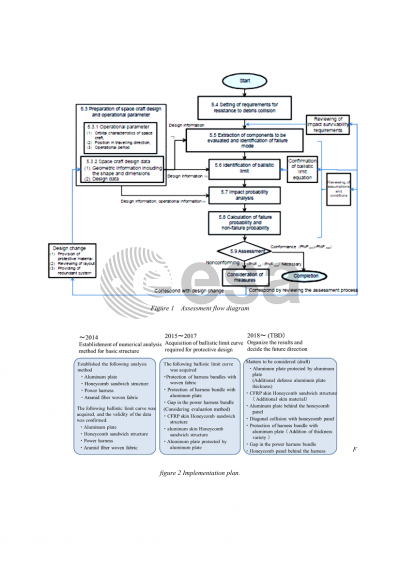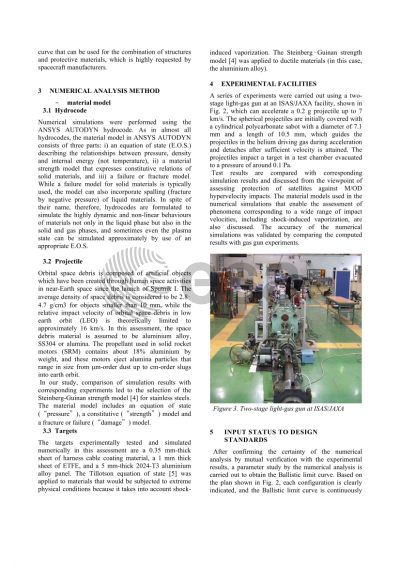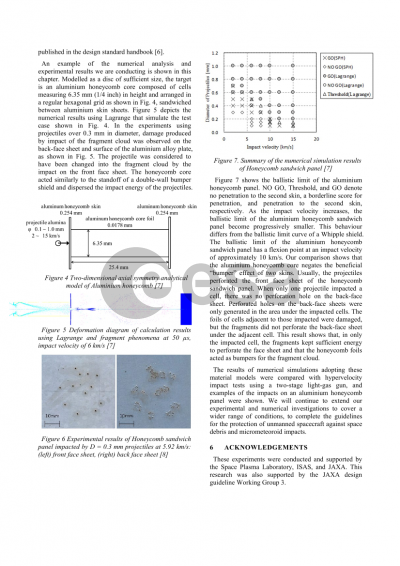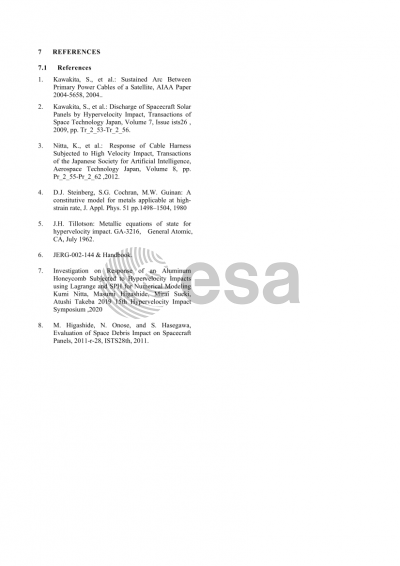Document details

Abstract
We have been conducting hypervelocity impact tests and numerical simulations in order to create Japanese design guidelines that protect satellites against a certain degree of impact by mi-crometeoroids and orbital debris. Certain members of JAXA, university researchers, computer analysts, and spacecraft manufacturers formed a working group to investigate the impact effect of OD on critical parts and bumpers, by conducting hy-pervelocity impact tests and analysis. The knowledge acquired is now being reflected in spacecraft design.
We plan to continue and extend our experimental and numerical investigations covering a wider and more diverse range of conditions, in order to complete the guidelines at JAXA for the pur-pose of protecting unmanned spacecraft against impacts from space debris and micrometeoroids.
We intoroduce this standard describes the assessment procedure for verifying the validity of the protection design of satellites and probes against risks of impact with M/OD which are 1 mm or less in size and whose impact probability and impact damage is not negligible.
To ensure the spacecraft mission in the environment of the micro-debris and meteoroid, the following points including the system design must be coordinated during the progress of the development of the system from the Mission Requirements Definition Phase.
(1) Consideration of debris density when determine the operational orbit altitude
(2) Consideration of the distribution of debris impact probability when determine the shape of spacecraft.
(3) Setting the policy concerning the allowable limit of impact risk (mission importance, rela-tionship with other redundant elements, etc.)
(4) Assessment in view of system design including the influence of loss of mass and layout change of components associated with impact protection measures (including allocation of re-sources)
(5) Setting a contingency plan including impact detection, damage monitoring, recovering, re-construction and isolation
This standard serves as guidance for impact protection design on the condition that the space-craft has been defined in shape, dimensions, operational orbital characteristics and operational period considering above conditions.
We have derived ballistic limit curves that can be used for combinations of structures and pro-tective materials that are highly requested by spacecraft manufacturers.
Preview






